History of Park Walk
including number 5
Little Chelsea
London
Number 5 Park Walk was built around 1725, near the end of the reign of King George I. It is thought that this row of early Georgian houses, 5 to 11, were built to accommodate the managers of the Raw Silk Company who had planted some 2,000 mulberry trees in Chelsea Park in 1718 together with facilities for the “nursing silkworms”.
Incidentally the oldest house on the Kings Road, number 211, Argyll House was built in 1723 by Giacomo Leoni for John Perrin.
The first record is of John Appletree who took out a royal patent on May 23, 1718 to cover his “way of raising silk”. The lease for the large house was held by William Lilly, William Pett and Robert Slater who has a royal patent for silk manufacture. The Weekly Journal of August 12, 1721, records that ; ”there is a great concourse of foreigners and others daily in Chelsea Park to see the Raw Silk Undertaking”
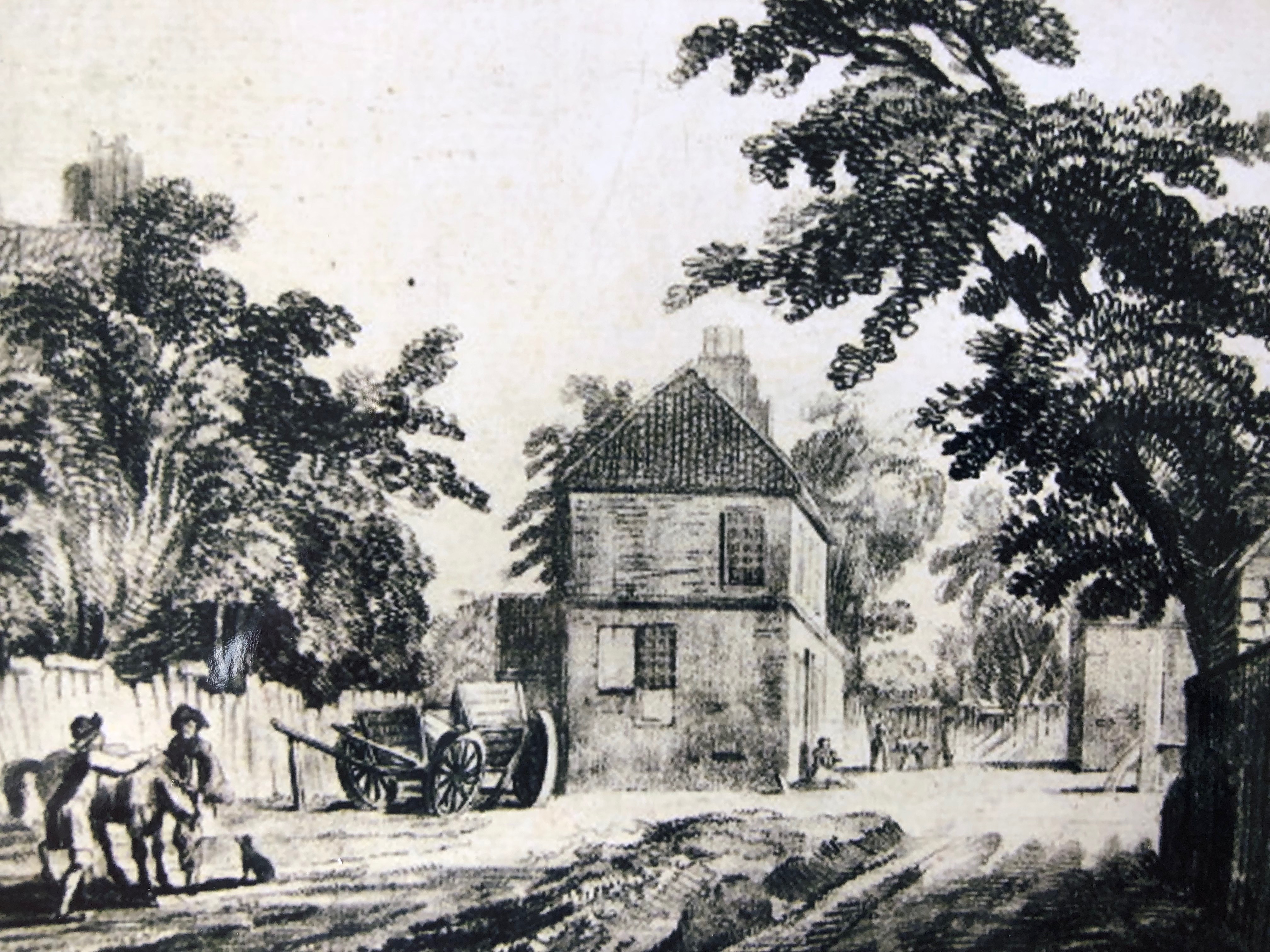
In 1723 the company was able to produce satin for a dress for Caroline of Ansbach Princess of Wales and, in 1727, the Queen and wife of King George II.
The Company however went bankrupt in 1724, partly due to the free trade policy of Sir Robert Walpole [1676-1745] which withdrew its protection from Italian competition. Walpole is generally regarded as the first Prime Minister of Great Britain, and was presented with 10 Downing Street by King George II in 1735, still the official home of the Prime Minister.
It is also reported that they planted the wrong mulberry trees, planting the long lived Black Mulberry {Morus nigra] with their edible fruit rather than the short lived White Mulberry [Morus alba] which silk worms much prefer. A few old and snarled mulberry tree can still be found in local gardens.
A Flemish engraver, Jacob Christoph Le Bon,[1667-1741] set up a factory in Mulberry Ground, possibly in our row, in 1732 for the purpose of weaving tapestries based on Raphael’s seven cartoons.[Beaver, Memorials of Old Chelsea] He had invented a three colour printing and tapestry weaving process. His method helped form the foundation of the modern colour printing.
Many protestant Huguenots including silk weavers, had arrived in England following the Revocation of the Edict of Nantes in France by King Louis XIV, The Sun King, in 1685.
Sadly the enterprise failed.
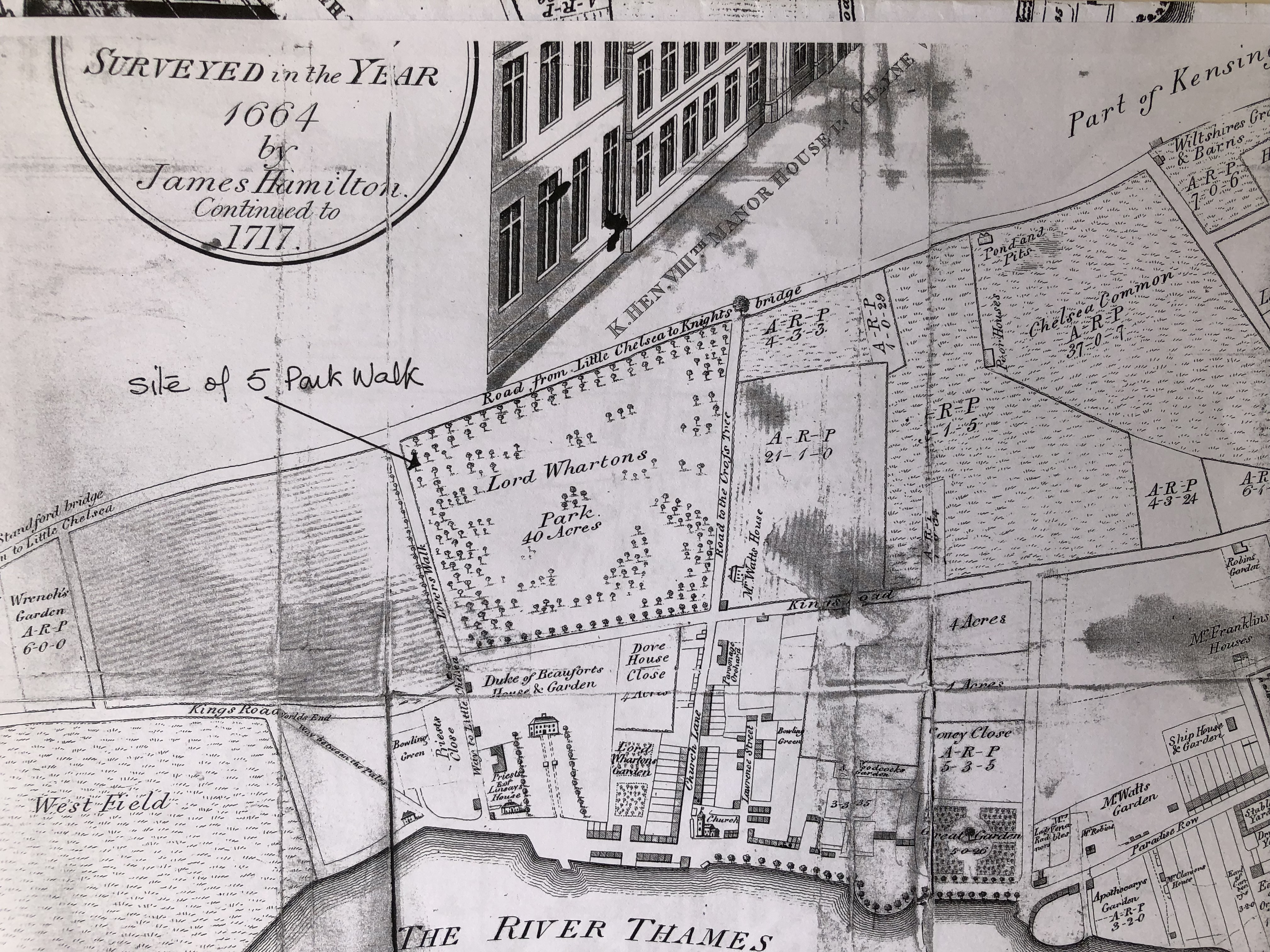
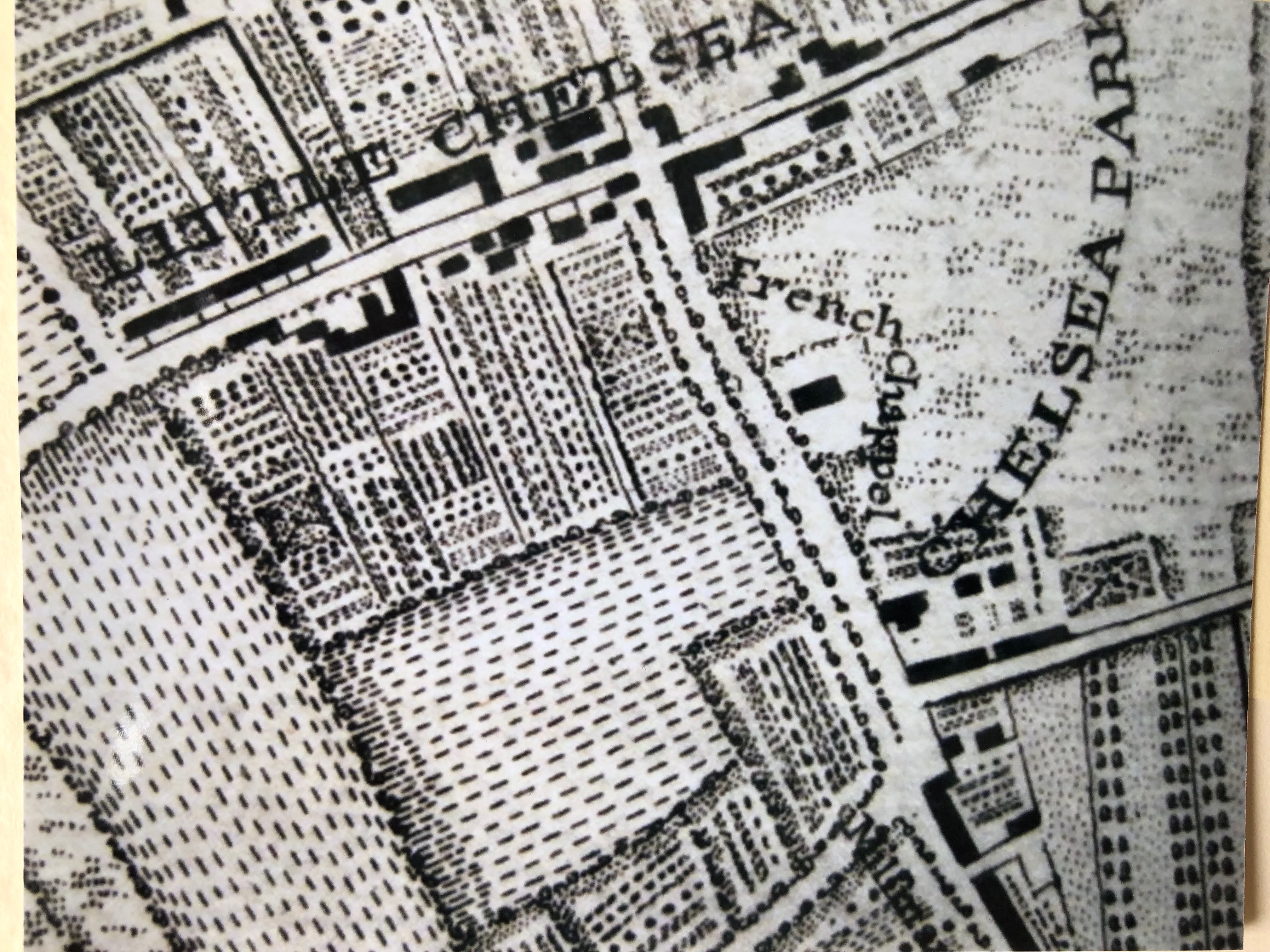

The simple Palladian influenced architectural style of the house reflects the great changes following the Great Fire of London in 1666 and the 1707 Building Act. The timber based vernacular style of gabled roofs, casement windows and overhangs was replaced by brick buildings and sash windows. The act banned projecting wooden eaves, replacing them with brick parapets with a cornice and the roof set behind.
The 1774 Building Act, “The Black Act”, recessed the window joinery back from the wall face to further avoid the spread of fire. The houses further down Park Walk on the east side reflect this style.
The timber panelling throughout the building is original and quite rare. According to the authoritative Survey of London of 1913;
“Number 5 retains its stair and panelled hall, and is the best preserved of the group. The lower flight with turned baluster open string staircase with decorated ends, the upper flight with closed string stair. The first and second floor rooms are fully panelled with box cornice, the composition of the panelling is divided by raised dadoes. The front rooms are complete but divided by inserted divide; rear rooms with corner stack [currently exposed on the second floor]. The others have been largely modernised inside but they retain the upper parts of the brick fronts with moulded brick cornices.”
The shop front extensions were added in 1888, however the front door is original early eighteenth century. The top floor was added in the late twentieth century.

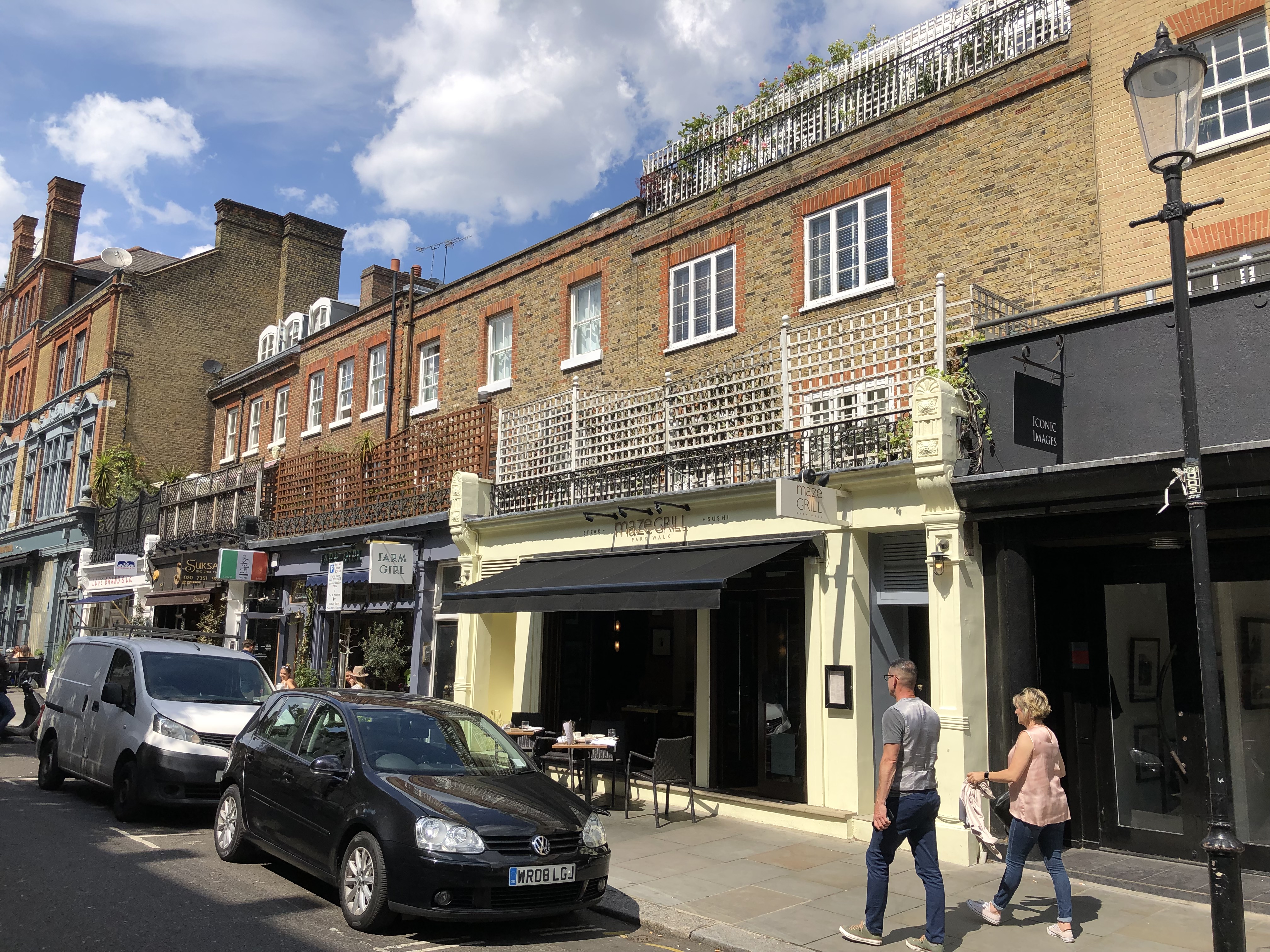
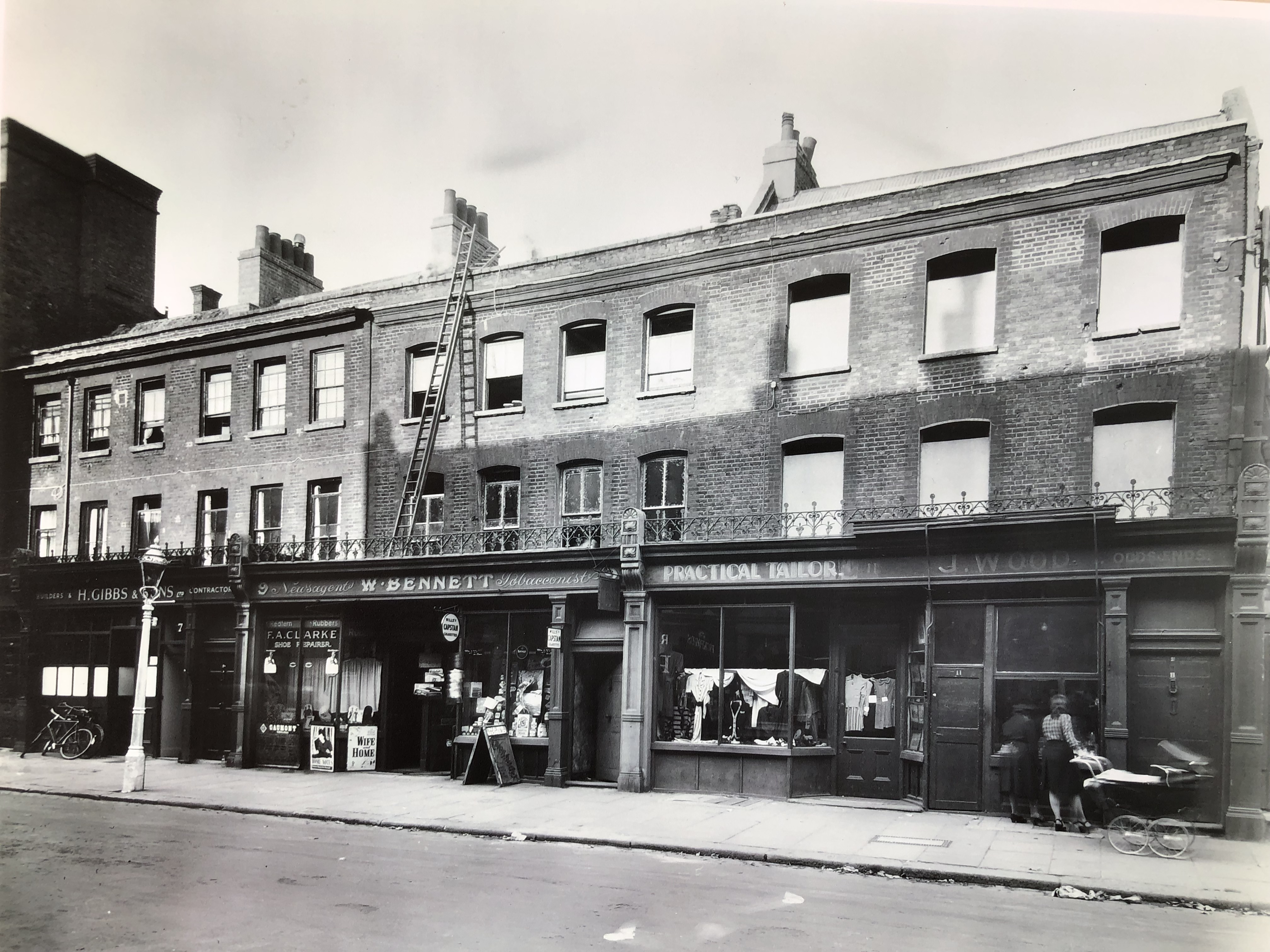
The rest of the houses on the east side of Park Walk before the church, date from 1830’s with the mansion blocks on the west side dating from the late nineteenth century.
Park Walk was originally known as Lovers Walk, the name was changed to Park Walk in 1886. Lovers Lane is often a sanitised version of the medieval name “Gropecunt Lane”. In 1869 the writer G. Bryan, described the Walk thus; “ after dark from its retirement and seclusion the era was dangerous for persons passing that way, it has degenerated into Two Penny Walk”. it’s recorded name in 1810.
The Walk formed the western boundary of the parkland, Chelsea Park, previously Sand Hills. It formed part of the estate of Beaufort House, built in the 1520’s and acquired in 1524 by “a man of all seasons” Sir Thomas More [1478-1535], councillor to King Henry VIII. The King had made the area very fashionable, owning Chelsea Manor House next door where the future Queen Elizabeth spent some of her childhood. This aura was such that in the 1720 the writer Daniel Defoe, famous for his novel “Robinson Crusoe”, referred to Chelsea as “A Village of Palaces”. More’s house was purchased by Sir Hans Sloane in 1737, sadly demolished in 1839, and replaced by Beaufort Street in 1766.
The eastern boundary of Chelsea Park was Church Lane, now Old Church Street, with the Fulham Road to the north.
Map Hamilton, 1664
Kipps view 1699 plus super imposition
A map of Chelsea by James Hamilton, dated 1664 and continued to 1717, shows a 40 acre park owned by Lord Wharton’s, and distinctly showing Lovers Walk. Lord Wharton [1648-1715] a man of great charm and political ability, a whig, but also noted for a debauched lifestyle. He is credited as the author of the original lyrics of the anti catholic anti King James II song “Lillibulero in 1688. He sold the park in 1714, it was then purchased by the Ray Silk Company in 1720. Following the Company’s collapse in 1724 the park was leased by Sir Richard Manningham from the new owner William Sloane, brother of Sir Hans Sloane.
There is an Indenture dated 18 March 1724 between Sir Richard Manningham and William Sloane Junior the parcel of ground for buildings on the east side of the road to be made 30 foot wide leading from Great Chelsea to Little Chelsea. [London Metropolitan Archive Middlesex Land Register 1724]

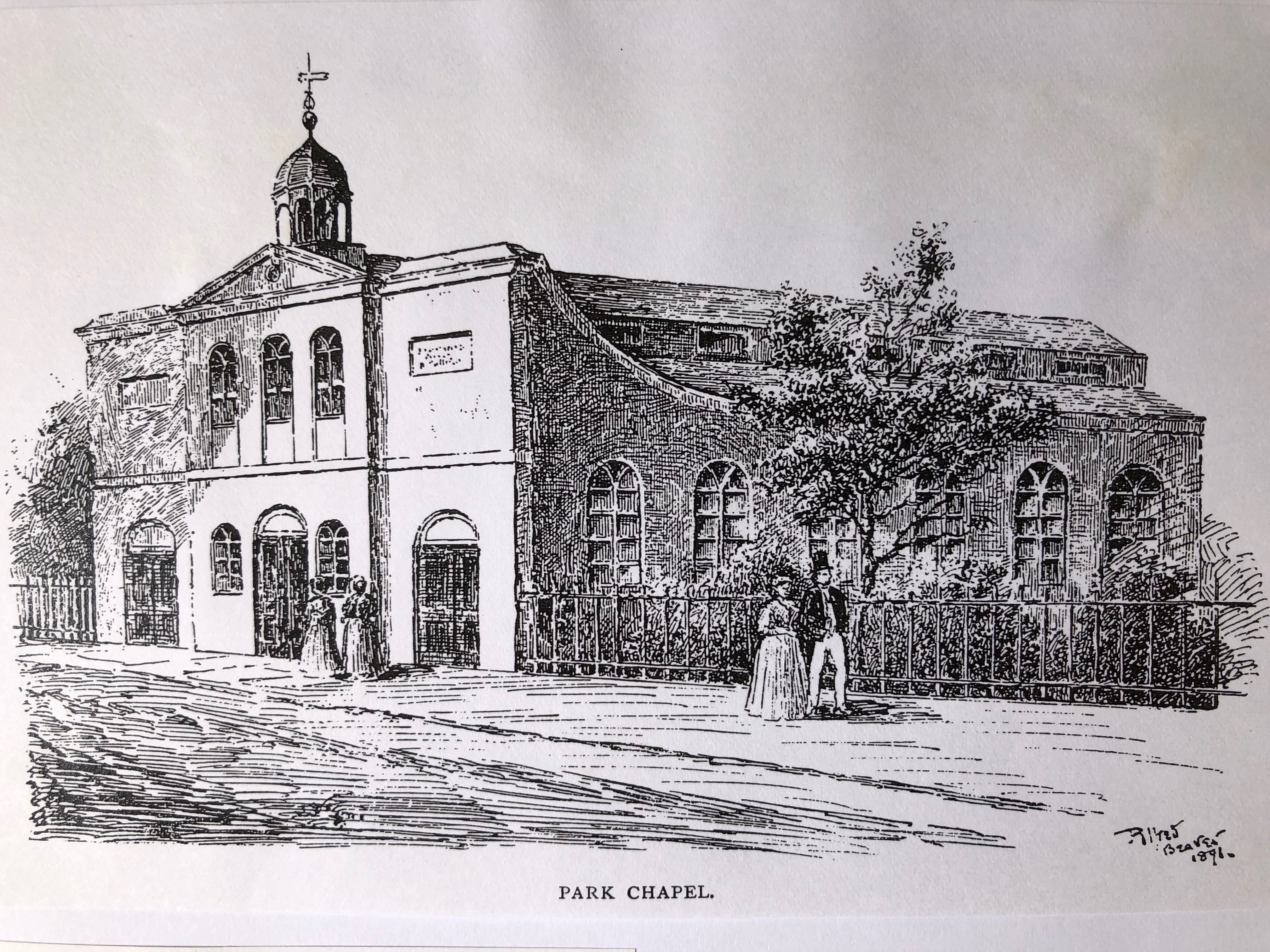
The current St. Andrews Parish Church on Park Walk was built in 1913, replacing the first church, a non-conformist Park Chapel built in 1718 by Sir Richard Manningham [1690-1759], a physician and man-midwife [accoucheur] knighted by George I in 1721. He was involved in the exposing of the Mary Toft hoax who claimed she had given birth to rabbits. this event was illustrated by William Hogarth in ‘Cunicularii, or the wise men of Godlemen in Consultation”. [British Museum]
The Chapel was enlarged in 1810. It was owned by a notorious banker Sir John Dean Paul [1802-1868] who was imprisoned for fraud in 1855, enabling the parishioners to purchase the Chapel [Article dated 1876 in the Local Studies Library in Kensington & Chelsea Library] There may have been an earlier French chapel on the site, built in 1708. Rocques map of London dated 1746 indicated a French Chapel on the site. [ see “Notes on the Sites and History of the French Churches in London” by George Beeman for the Huguenot Society 1905, mentioned in Chelsea Scraps 5]
It was in this chapel that Major General Gordon of Khartoum [1833-1885] received holy communion before his ill fated journey to Khartoum in The Sudan, his brother Sir Henry Gordon was a chapel warden. [See Mitton’s book on Chelsea Past published in 1902]
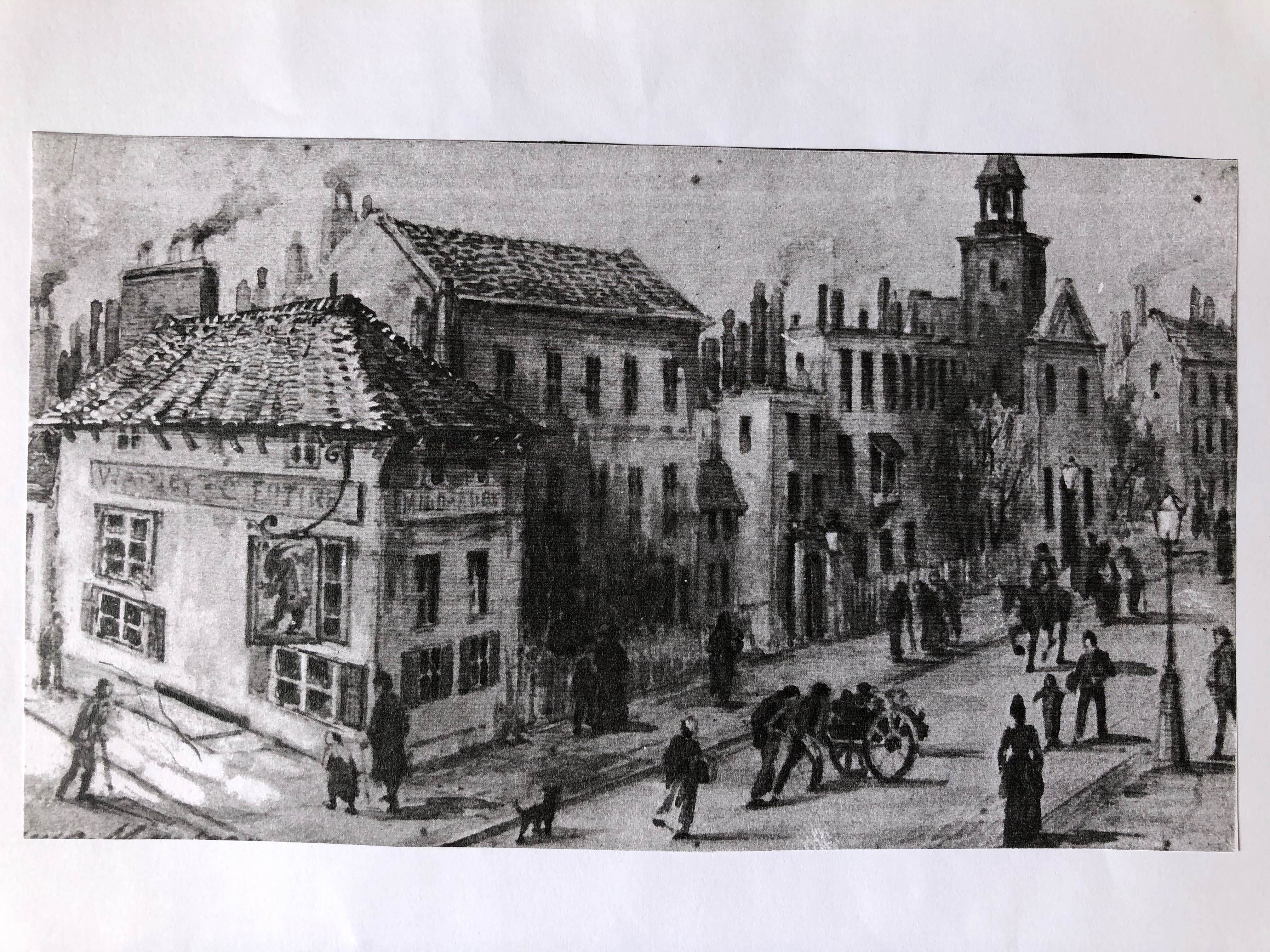
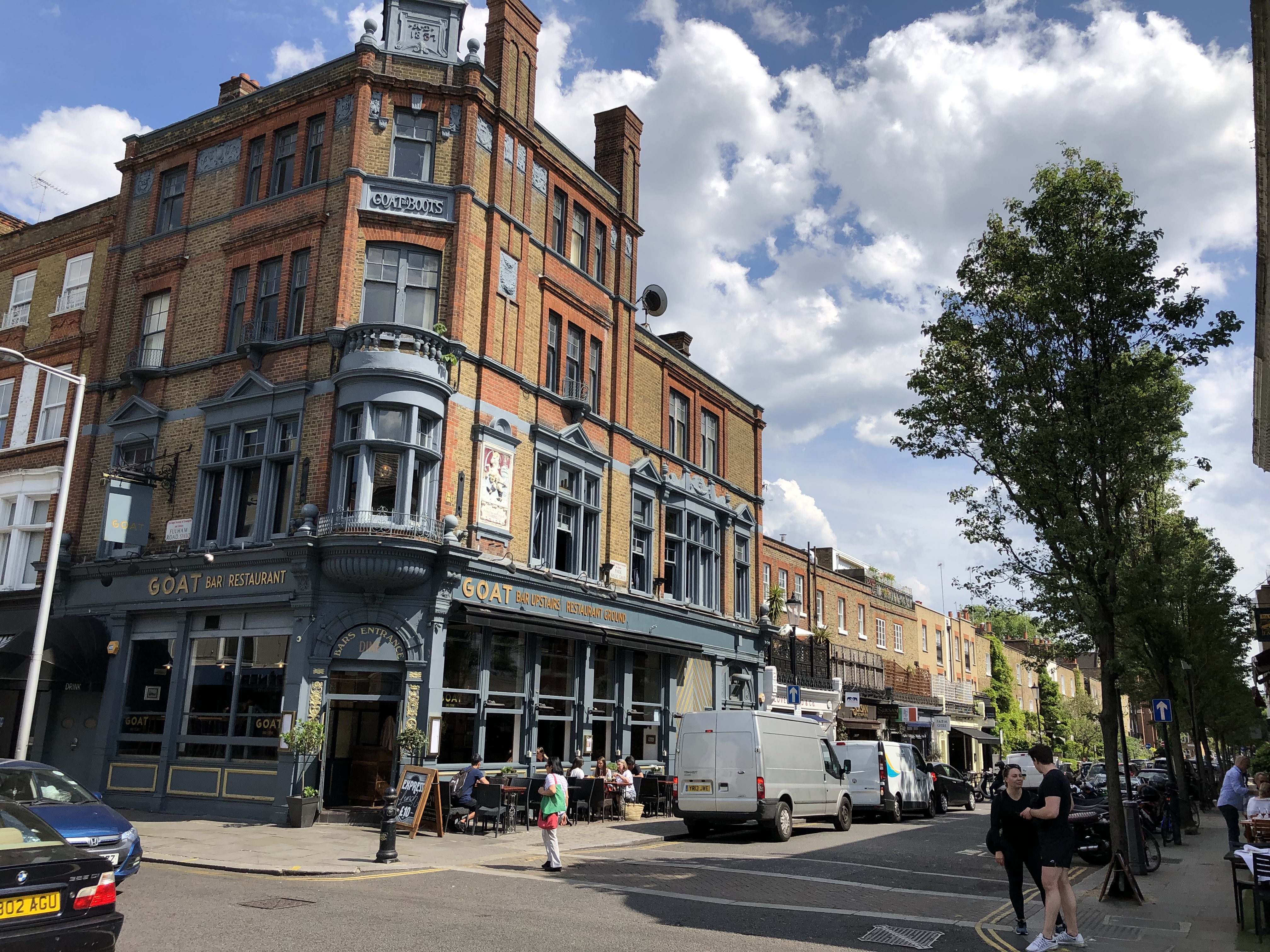
The Goat in Boots public house was originally a coaching inn on the Fulham Road turnpike. It was owned in 1671 by the Hon. Thomas Wharton and known as The Goat, a name it has recently returned to. The History of Middlesex says it was called The Coach and Horses in 1737. The stables and coach house were where Peony Court now stands. The inn was purchased in 1713 by Sir Hans Sloane [1660-1753] who was a major land owner at the time, having purchased the Manor of Chelsea in 1712, helped by his wife’s money from sugar plantations in Jamaica. Sir Hans Sloane was a doctor but better known as a founder of the British Museum collection and inventor drinking milk chocolate. He had two daughters, Sarah married George Stanley of Paulton and Elizabeth married Charles Cadogan, the two families still own much of Chelsea and knightsbridge , the Sloane Stanley Estate and Cadogan Estate.
The Inn was replaced in 1888 by the current very Victorian public house , built by Mssrs Turtle and Appleton to the design of Mr. T.H. Smith, who also designed the shop extensions.
The name Goat in Boots is said to derive from the Dutch “Mercurius is der Goden Boode”, translated as “mercury is the messenger of the gods”. mercury was a sign used by inns where post horses were kept, and “der golden boode” was freely translated into “goat in boots”. Both Mercury, and his Greek equivalent Hermes were seen as protectors and patrons of roads and travellers.
Thea Holm in her book on Chelsea says that; “the original figure of the gods’s messenger is believed to have been ingeniously transformed by the artist George Morland into a figure of a goat in top boots with a cutlass and spurs”. A crude copy of Morland’s painted sign on the side of the building is all that survives of Morland’s original. The successful and popular artist George Morland [1763-1804], was however extravagant, living a dissipated lifestyle. He was frequently in a state of financial embarrassment and painted inn signs in payment for his food and drink, and lived at one time in Kensington. {See also Croker “Walk from London to Fulham”}
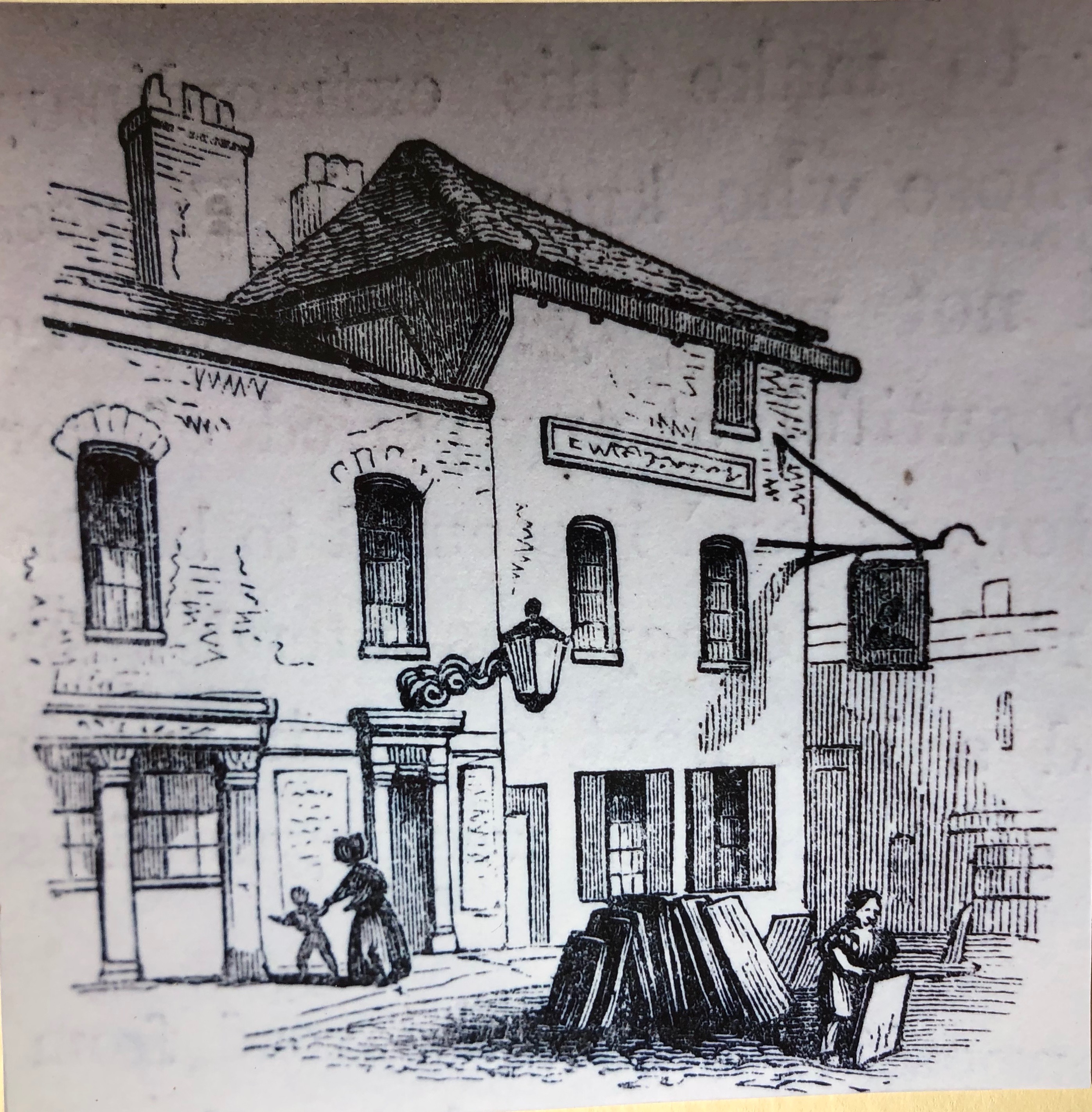
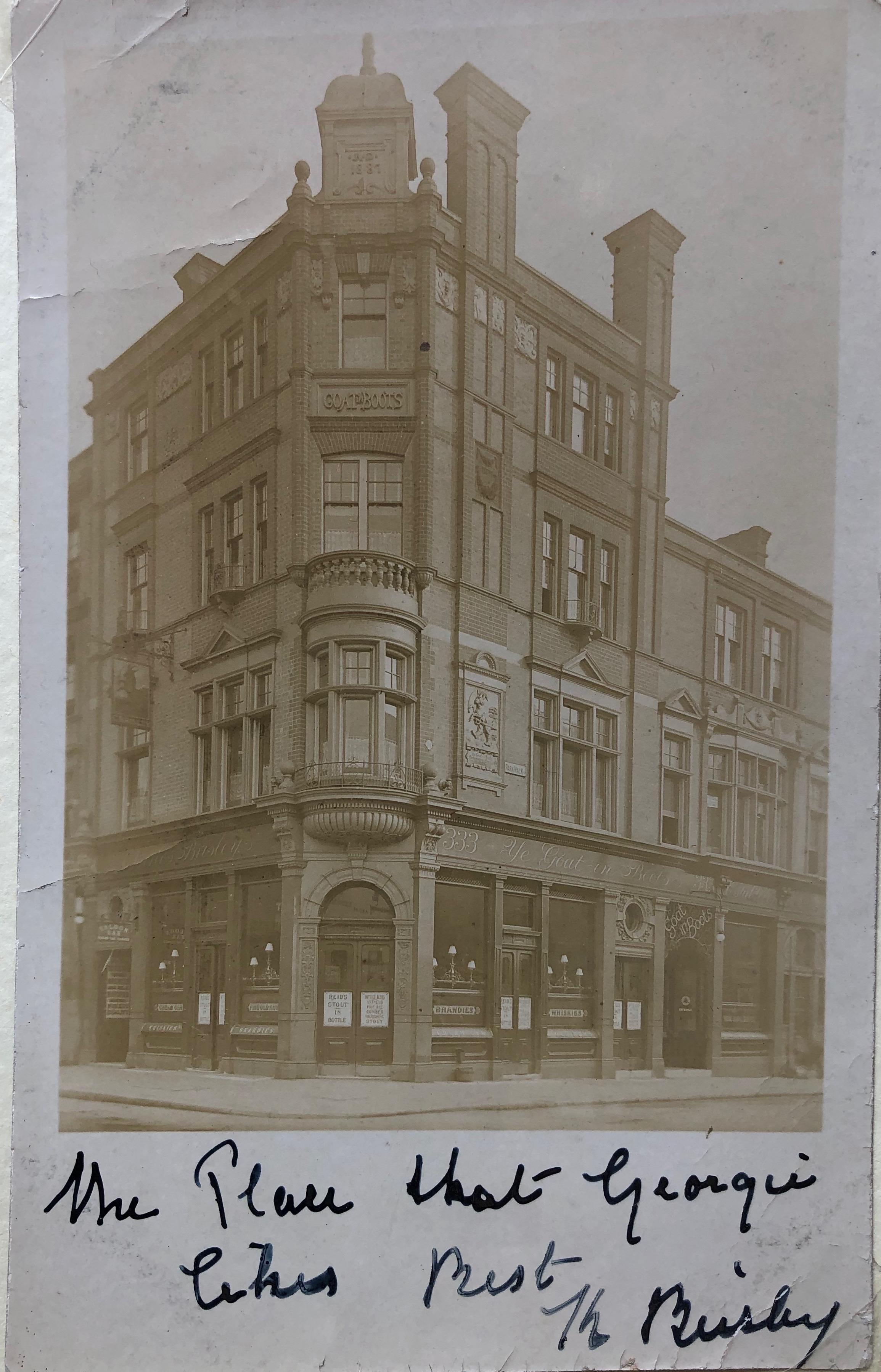
Park Walk Board School, at the south west part of Park Walk, was opened in 1881, and remodelled in 1903.
A London County Council school report of 1950 noted that “There is little left today in the immediate neighbourhood of the school to bear out the name of the thoroughfare in which it stands and from which it takes its name” . It also reported that the Lots Road Power station contributed to a greta deal of deposited dust, and that most of the parents worked for the Wayne Brewery and Phillips paper mill. An inspectors report of 1930 noted that the children were anaemic and undernourished.
Man in the Moon alehouse at the south end of Park Walk on corner with Kings Road in 1769 in a house built in 1733.
A House through Time
Residents of 5 Park Walk
over nearly three hundred years
In 2016 the BBC made a fascinating documentary, A House Through Time, tracing the lives of the residents of a 1840’s house in Liverpool up until the present day. The author Bill Bryson once observed that our homes are not refuges from history but the place where history ends up.
Below is the start.
We have a list of the 17 residents of 5 Park Walk from 1737 to 1800 , detailed in the Survey of London sourced from the rate books, from Lady Isham in 1748 to Elizabeth Page in 1796-1800.
We currently have a gap to 1887 from when we have details up to the present.
In 1887 a W.H. Pike ran a laundry at 5 Park Walk. In 1902 5 Park Walk was owned by a Mrs. Eleanor Wigley who ran Dining Rooms in what is now the shop. According to the Post Offices London Directory by 1904 the ownership of the Dining Rooms had changed to Frederick and Leah Northam who continued there until 1925 when Herbert and Violet Lazarus took over, and continued running the Dining Rooms until at least 1942. In 1948 both numbers 5 & 7 were occupied by H.Gibbs & Sons, Builders where they continue until at least 1982. They could well have occupied the ground floors. The house above was occupied in 1949 by David and Pauline Ferryman and Norman and Marcia Pierce. However by 1959 the house was occupied by Mabel and Maurice Smith and Helen and Henry Gibbs, owner of the building firm. in 1969, when the house appears to have been split, the Smiths were still there but now Sheila and Thomas Gibbs, and by 1995 Maurice Smith was still living at number 5 but with Sheila and Simon Gibbs. However the shop appears to have been taken over by a Ladies Fashion shop. Nearly 50 years of the Gibbs Family at 5 Park Walk. in 1999 a Henry Tellwright bought the house, added to top floor and sold it to the current owners in………
Number 7 Park Walk was occupied by a butcher, Ralph Rawle from 1904 to 1922 when Walter Blincko opened opened a frittered until 1938 when the Male family moved in until the Gibbs took over after the war.
At number 9 Victor Roekaerts, a military musical instrument maker from Belgium, lived from 1887 until 1911 with his wife, four children one servant and 4 borders, according to the Census. in 1911 a hairdresser was opened by Julia Bennett. By 1921 she and John Bennett had a newsagent taken over by William Bennett in 1942 untill 1961. In number 11 lived a watchmaker until 1934 when a tailor, Alfred and Alice Bailey. opened up a business. In 1951 there was a second hand clothe shop followed by a general dealer in 1961.
According to the register of Electors the residential pattern of numbers 7,9 and 11 from 1921 t0 1979 was characterised by Multiple occupancy. For example in 1921 the occupants of number 11 were; Samuel and Mary Dainty, Eveline Livick, Henry and Jane Tite. By 1931 the occupants were still Eveline Livick and Jane Tite but plus John Brown, Ellen Corbett and Alice Moor. In 1939 Evelyne Livick and Jane Tite , were still there but now with William and Elfreda Cheesley and Esther and Myer Cohen. What were their stories?
In 1969 three girls now lived at number 11; Annette Bradshaw, Colleen Fitzpatrick and Margaret Keswick. In number 9 there were four men; Richard Bull, Donald Davis, John Boyle and Julian Seymour. Any meetings?.
Eating Out in Park Walk
under preparation
In 1970’s the whole retail character of Park Walk changed as eating out changed from “Necessity Eating”, as typified by the dinning rooms at number 5 to “Pleasure Eating” following the sudden growth in bistros and trattorias on the Kings Road, noted by Osbert Lancaster “Kings Road Mediterranean” in 1968. Two years after Time Magazines famous issue on Swinging London [April 1966 and the Opening of Alvaro’s by Alvaro Maccioni at 124 Kings Road. The famous Drug Store, 49 Kings Road, was opened in 1968 in what was the White Hart pub. The everlasting Raffles Night Club, 287 Kings Road was opened in 1967 by Peter Evans.
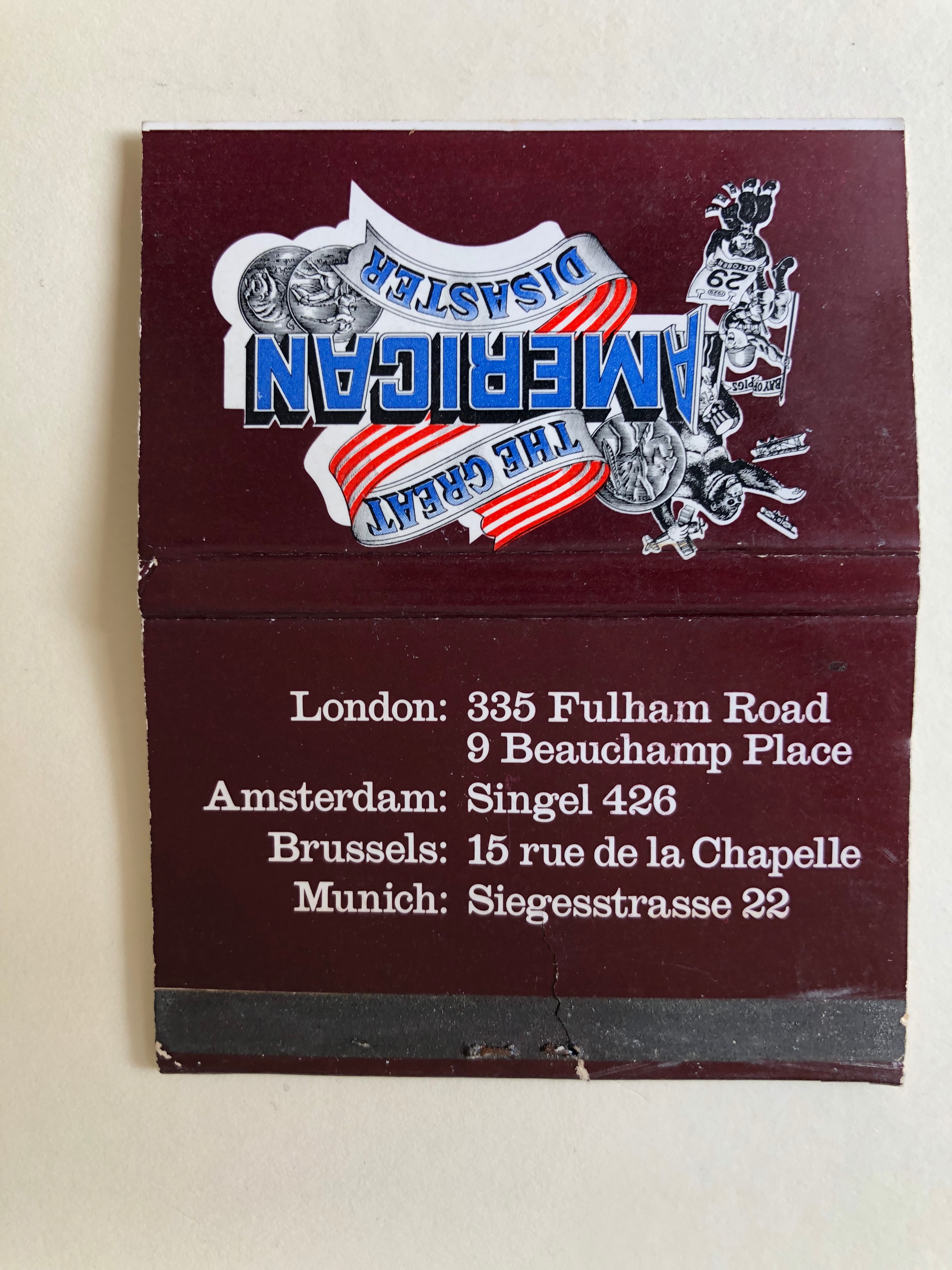
The Trois Amis opened in early 1970’s at number 11. The Last Tango Restaurant opened at number 7 and Pino’s El Bodega at number 9, both in 1977. By 1885 the Red Pepper opened at number 7, in 1988 the Chinese Cellar opened in 9 and 11 Park Walk Restaurant at number 11.
The Famous Great American Disaster hamburger joint opened on the corner of Park Walk and 335 Fulham Road in 1970 by Peter Morton. In stark contrast the the ubiquitous Wimpy Bars, introduced in 1953 replacing the Joe Lyons Corner Houses.
Photo of Book Match
Under construction
7 Park Walk Last Tango [1977]
The Red pepper [1985]
Suksan Thai restaurant
9 Park Walk
El Boderga 1977
Gilmours {2009}
White Box restaurant & Bar
The Henry Root , based on the fictional writer created by writer William Donaldson who lived in a Mansion Block on Park Walk
Farm Girl Chelsea [2018]
Basement; Chinese cellar 1988
No 9 Park Walk Bar
Chelsea Cellar
11 Park Walk
Les Trois Amis 1970
11 Park Walk restaurant 1988
Aubergine [1993 -1998 Gordon Ramsey]
Maze Grill [2014 Gordon Ramsey]

Cassondra Swails
Pretty great post. I just stumbled upon your blog and wished to say that I have really loved surfing around your weblog posts. In any case I will be subscribing on your feed and I am hoping you write again very soon!|
Bertram Lairsey
I feel that is among the so much vital information for me. And i’m happy reading your article. However want to commentary on few normal things, The website style is great, the articles is actually great : D. Excellent activity, cheers|
Sean Santaella
Heya i am for the first time here. I found this board and I to find It really useful & it helped me out much. I’m hoping to give one thing back and help others such as you helped me.|
Alvera Reiner
Terrific work! This is the kind of information that are supposed to be shared across the web. Shame on the search engines for not positioning this publish upper! Come on over and consult with my web site . Thanks =)|
Bridgette Handing
You are so interesting! I do not suppose I’ve truly read through a single thing like this before. So good to find someone with unique thoughts on this topic. Seriously.. many thanks for starting this up. This web site is something that’s needed on the web, someone with a bit of originality!|
Katheleen Splatt
This is really interesting, You’re a very skilled blogger. I’ve joined your rss feed and look forward to seeking more of your wonderful post. Also, I’ve shared your site in my social networks!|